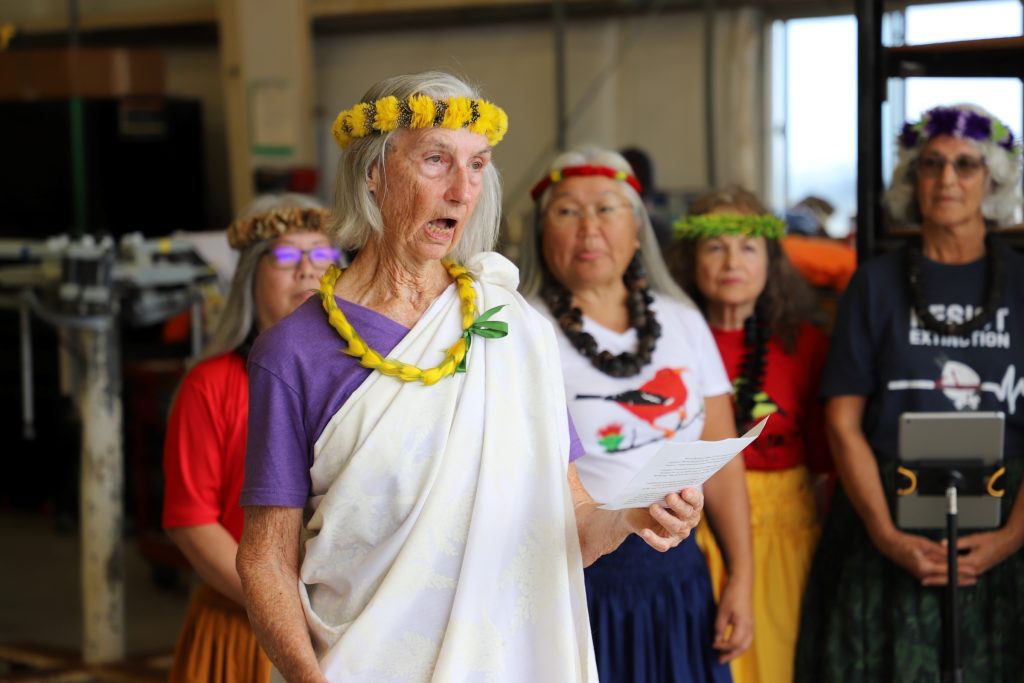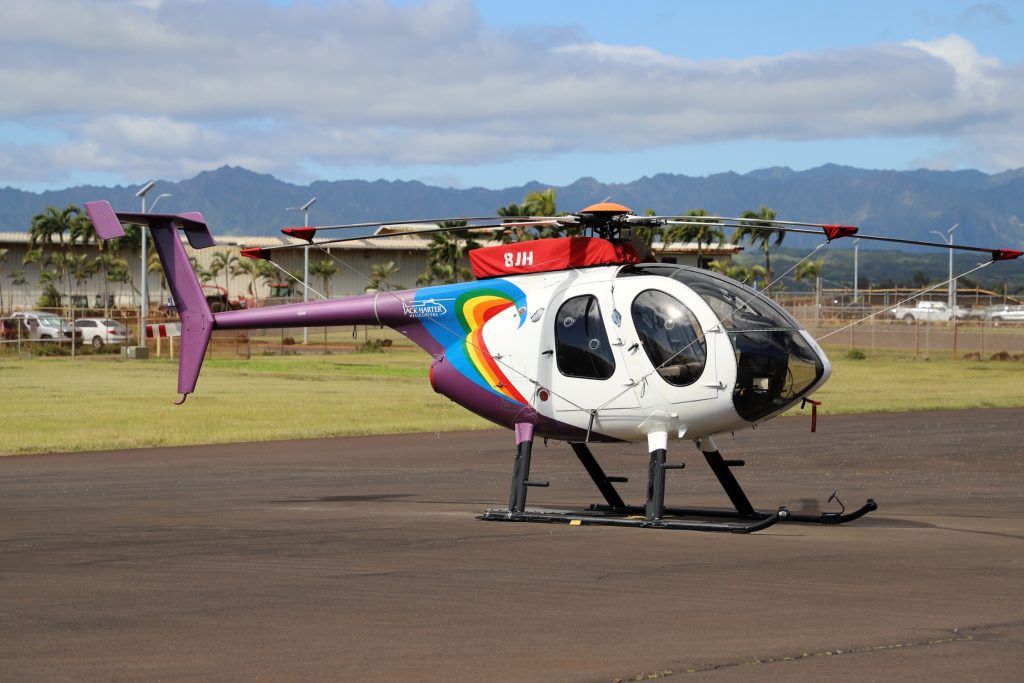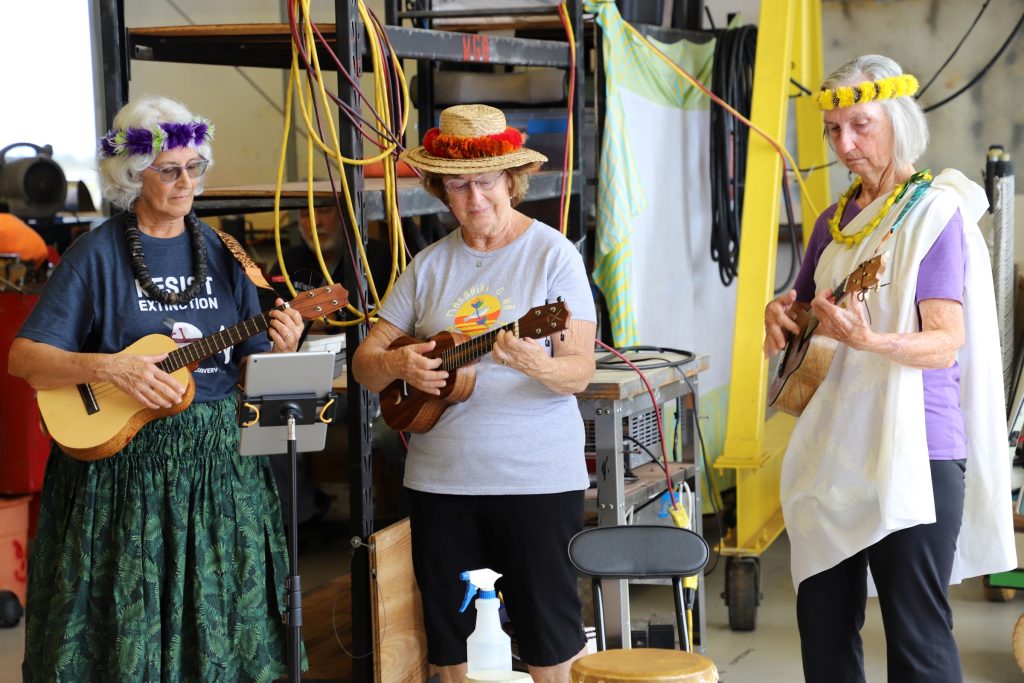‘Teamwork kind of thing’: Helicopters provide critical support for Kaua‘i Forest Bird Recovery Project during field season
More than two dozen people flocked together Feb. 3 in a hangar on the north end of Līhuʻe Airport, joining Kaua‘i Forest Bird Recovery Project for an annual blessing to kick off another season of fieldwork on the Garden Isle.
This year’s event included blessing extra “birds” that provide invaluable support as conservationists race against the clock to protect threatened and endangered Hawaiian forest birds.

Helicopters give Kaua‘i Forest Bird Recovery Project the additional air assistance it needs to help populations of these native forest birds — species such as Hawaiian honeycreepers and songbirds the ‘i‘iwi, puaiohi, ‘akikiki and ‘akeke’e — recover in the wild.
“Working with our partners to find the budget that we needed to be able to increase the amount of air support we have for our operations has been critical,” said recovery poject leader Lisa “Cali” Crampton.
Field season typically runs February through the summer each year.
Kaua‘i Forest Bird Recovery Project staff head into mountainous areas such as Kōkeʻe and the Alakaʻi Plateau for work that can include monitoring, bird trapping, disease control and habitat restoration.
The organization’s efforts have spanned nearly 20 years, with conservationists using their own two feet for much of that time to get through and over arduous terrain.
That takes a major toll on staff and reduces the time they spend in the field.
“Physically, just getting to the different spots where the work’s going to take place is a 2-hour drive, plus a 7-hour hike,” said Justin Hite, a planner with the Hawai‘i Department of Land and Natural Resources Division of Forestry and Wildlife and formerly with Kaua‘i Forest Bird Recovery Project. “To do the work in a productive way, you’ve got to have air support.”

Helicopters will be especially crucial this field season for a two-pronged mosquito control effort in Kaua‘i’s mountains, where forest bird populations have been decimated by the advance of mosquito-borne avian malaria.
Cones full of male mosquitoes incompatible with local females so their matings are inviable, thus reducing the insect’s population, will be dropped starting next week from choppers hovering overhead.
Teams also used helicopters during the past year to spread a biological larvicide, which is targeted bacteria to eliminate mosquito larvae in standing water.
“In the past, we’ve tried to reduce populations with hand treatments and it’s like finding a needle in a haystack trying to find every little water source there is in the Alaka‘i Plateau because essentially it’s a swamp,” Crampton said.
Helicopters will also serve as a kind of intensive neo-natal care transport for eggs of ‘anianiau — the smallest Hawaiian honeycreeper in existence, weighing in at less than an ounce — during the 2025 field season as the team begins a conservation breeding program to serve as an insurance population for the species.
“If we can’t get those eggs out in a timely fashion by helicopter, the program won’t work because it’s too dangerous and too time consuming to hike tiny little eggs out,” Crampton said.
Staff from Kaua‘i Forest Bird Recovery Project partner Jack Harter Helicopters joined Monday’s blessing.
Additional scenes from the Feb. 3 blessing event for the annual field season.
The company’s website even includes a page where customers can donate to the cause.
“It’s just been a great teamwork kind of thing. We just appreciate having you guys around, because you may know it or not, but Jack Harter died a few years ago,” said the company’s special projects director Casey Riemer, adding the first time he went flying with Harter, the company’s namesake and founder talked about Kaua‘i’s native forest birds. “Talked about how they’re worried about the temperature rising high and the mosquitoes getting up there. So, now we’re doing something to help keep it from going further.”











